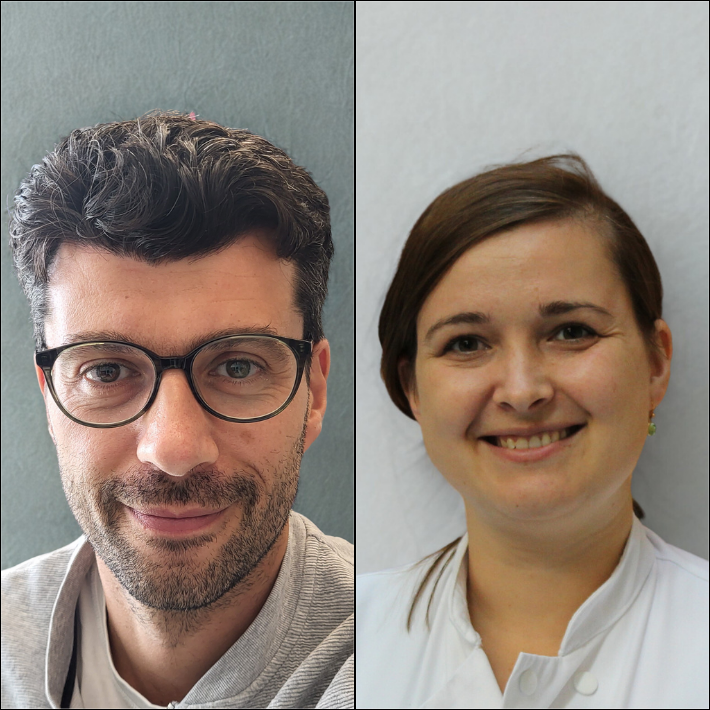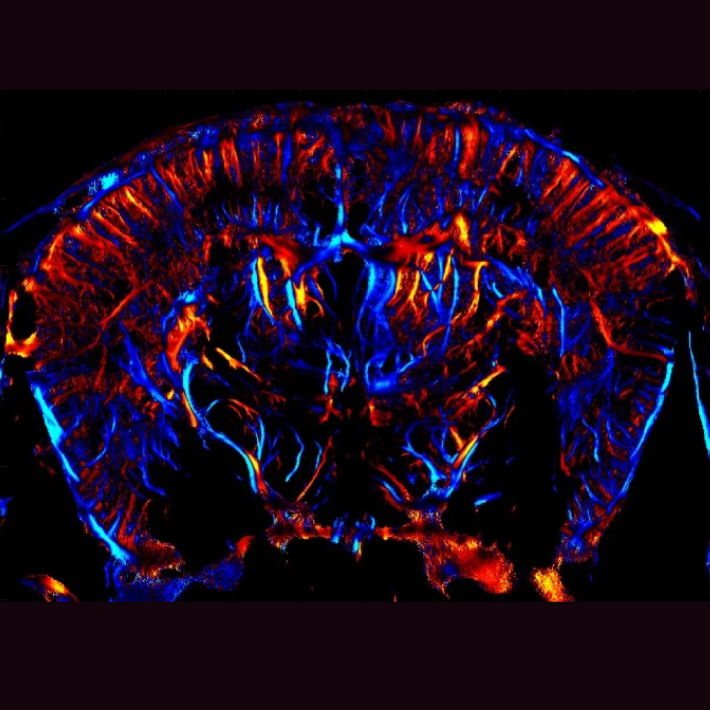Advanced genomics technologies expose promising biomarker candidates in facioscapulohumeral muscular dystrophy
PhD student Dongxu Zheng
&width=710&height=710)
FSHD
Facioscapulohumeral muscular dystrophy (FSHD) is one of the most common hereditary muscle disorders, though it is considered rare. Approximately 2,000 people in the Netherlands and 500,000 worldwide are affected by the disease. FSHD is characterized by progressive muscle weakness, often beginning in the face, shoulders, and the upper arm. While some patients experience a slow progression with mild symptoms, others face more significant challenges. About 20% eventually lose the ability to stand and walk, becoming reliant on a wheelchair for mobility.
Start engine DUX4
FSHD is caused by a genetic change that leads to the production of the transcription factor DUX4 in the muscles of FSHD patients. Transcription factors control the activity of genes. They turn specific genes on (or off) by binding to the DNA and control the expression of these specific genes, at the right time, in the right tissue, and in the appropriate amount. This way cells, organs, and organisms develop and function properly throughout their lives.
DUX4 is a transcription factor that plays an important role in the very early stages of development of an embryo. “When the embryo consists of just four cells, DUX4 switches the genes on that are necessary for an embryo to grow and develop. DUX4 is like a start engine and kickstarts the embryonic genome after which it rapidly disappears. This is important because DUX4 is only needed during early embryonic development and not in adult tissues. However, in people with FSHD, DUX4 stays active in muscle cells when it should not. This damages the muscles, causes inflammation, and leads to muscle weakness”, says professor Silvère van der Maarel.
Not quite the same
“We were interested if DUX4 would activate the same genes and generate the same messenger RNA (mRNA) in FSHD muscles as it does in the early embryo. Think of a gene like a recipe—by changing some ingredients or steps, you can make different variations of the same dish. Similarly, a single gene can produce multiple mRNA variations called isoforms, depending on how the RNA is cut and rearranged during a process called alternative splicing.
This is important because it allows one gene to create several different mRNA isoforms that, in their turn, become different (but related) protein isoforms each with unique functions. In short, our body can make several related proteins from the same gene. In the case of DUX4, we found that DUX4 generates mRNA isoforms in muscles from FSHD patients that differ from those produced by DUX4 in the embryo: mRNA similar to the embryonic state but not quite the same”, PhD student Dongxu Zheng explains.
Innovative research facilities
The LUMC has always been an early adapter of the latest genomics technologies, allowing the researchers to gain deeper insights into the role of DUX4 in FSHD. Thanks to its state-of-the-art research facility, Zheng, Van der Maarel, and their colleagues successfully identified the mRNA isoforms using the innovative long-read RNA sequencing technique.
RNA sequencing is the process of reading the RNA code. Short-read sequencing is a common technique within the field of genetics. It gives information about short pieces of RNA. Long-read sequencing looks at complete RNA molecules. Zheng: “Going back to comparing genes to a recipe, you can say that a short-read gives you ‘snippets of the recipe’ that you have to combine yourself while a long-read gives you ‘full recipes.’ And because of having ‘full recipes’ instead of ‘snippets,’ we now have a better understanding of all the ‘recipes’ produced by DUX4 in the muscle and in the embryo and its end result: the proteins and their possible roles in FSHD.”
Treasure box
DUX4 is already well known and well-studied in the context of FSHD but the recent discoveries made by Zheng and Van der Maarel open up a treasure box full of new information. “We found many isoforms that were expressed in FSHD muscle tissue but not in healthy muscle tissues. We are now looking if these FSHD mRNA isoforms are indeed translated into muscle proteins and if they could be used as biomarkers.,” Van der Maarel explains.
Biomarkers could be linked to disease severity, duration, or pathology. In addition, clinical studies are ongoing or announced, also in the LUMC, studying the effects of blocking DUX4 in FSHD patients. In that case, biomarkers could be used to assess whether DUX4-inhibition therapy works. Another exciting possibility is finding a biomarker that is secreted into the blood. That way an accessible method (blood instead of the muscle) could be used to determine FSHD progression or therapy success. Van der Maarel: “We have exciting times ahead where we, in collaboration with researchers over the world, are again a step closer in understanding the mechanisms behind FSHD.”
More information
Read more about the research of Zheng and Van der Maarel in Science Advances. More information about FSHD can be found at the website of the LUMC and the Prinses Beatrix Spierfonds.
Funding
This study was supported by the Prinses Beatrix Spierfonds and the US National Institute of Arthritis and Musculoskeletal and Skin Diseases.

&width=710&height=710)
&width=710&height=710)
&width=710&height=710)
&width=710&height=710)